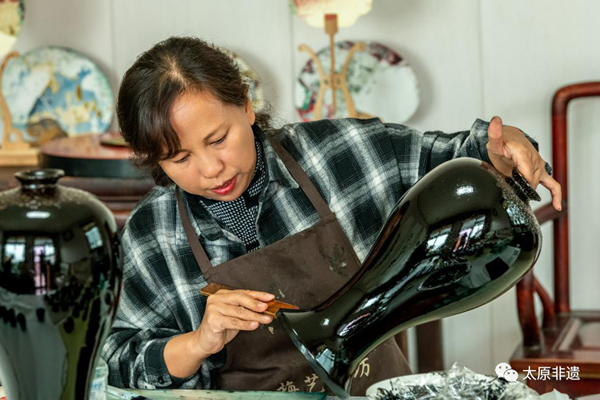
An artisan meticulously makes Taiyuan lacquerware. [Photo/Official WeChat account of Taiyuan Intangible Cultural Heritage]
Taiyuan lacquerware originated in the Spring and Autumn Period (770-476 BC), flourished in the Tang Dynasty (618-907) and reached its peak in the Ming (1368-1644) and Qing (1644-1911) dynasties.
Traditional lacquerware is mainly made of pure natural lacquer with a high value and is corrosion resistant, wear resistant and acid resistant.
The charm of natural lacquer is that its color will change with temperature and humidity, which allows Taiyuan lacquerware to display different patterns and colors over time.
The making of Taiyuan lacquerware involves complex traditional techniques which, like all kinds of crafts, and has its unique forms of expression and creative styles. The basic production process can be divided into:
1. Conceptual designs that are divided into three parts: modeling designs, pattern designs and process designs.
2. Form the lacquerware mold in which materials such as wood, bamboo, pottery, paper, leather and metal can be used.
3. Stick cloth to the lacquerware mold layer by layer, use a scraper hand tool to apply tile ash to the lacquerware mold and then grind the mold.
4. Paint the lacquerware mold. Each layer of painting needs to wait until it dries at a certain temperature and with the right humidity conditions before the next process begins. The paintwork usually requires a dozen or even dozens of times.
5. Make patterns on the lacquered mold, during which inlaying, painting, the spraying of paint powder, pasting of gold and silver foil, carving and other methods are applied.
6. Use sandpaper, vegetable oil, polishing powder and other materials on the surface of the lacquer for grinding and polishing, to increase the gloss of the lacquerware.
